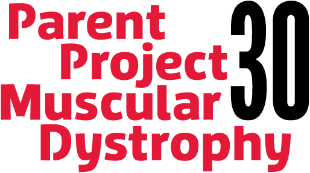
Thanks to decades of advocacy, funding and innovation, our healthcare landscape is rapidly changing. As new therapies emerge into the marketplace, patients, providers, and payers are faced with challenges as to how to discern which therapies are most appropriate for which patients in which combinations and which time. In order to facilitate this decision making, an attempt to define the ‘value’ of specific interventions is made.
An entire sector exists around this definition of ‘value’ and – in the United States – value assessments for neurological products are led by the Institute for Clinical and Economic Review (ICER). ICER is an independent and non-partisan research organization that objectively evaluates the clinical and economic value of prescription drugs, medical tests, and other health care and health care delivery innovations.
Today, ICER announced that it will be conducting an assessment of two Duchenne therapies – eteplirsen and golodirsen – over the next seven months. PPMD has long been engaging with ICER and will work to ensure that our community and all relevant stakeholders are included within this review process.
Over the coming days and weeks, PPMD will provide more information about opportunities for members of the community with experience with the products under review to engage in the process. We first wanted to ensure that we provided some context around ICER and their assessments.
The ICER Assessment Timeline
And Key Engagement Dates for Community Members with Experience with Either Eteplirsen or Golodirsen
The ICER Review
Step 1 – Open Input Period begins now – 12/13 – 1/8
The first part of the ICER Review process has begun and is known as the Open Input Period. Extending from December 13th through January 8, this is a critical part of the process in which the clinical and patient community is invited to submit information directly to ICER about your direct experiences with the products under review. Please note that it is the testimony of individuals with direct experience with these products that will be most impactful to the process. These submissions will help ICER to gather information on the various benefits derived from the products, as well as the contextual considerations they will need to account for throughout their review. For more information about submitting comments, please visit ICER’s website. If you are a patient or a clinician and have direct experience with one of the products being reviewed, and have questions about this process and how to engage, click here to download “Considerations for Submitting Comments to the ICER Assessment of Eteplirsen or Golodirsen: A Tip Sheet for Duchenne Community Members” (PDF).
Step 2 – Public Comment on Draft Scoping Document – 1/11 – 2/1
On January 11, ICER will post their ‘Draft Scoping Document’. This initiates a public comment period that extends through February 1. We will post more details later. The comments received will inform the Final Scoping Document, posted February 11.
More dates will be provided as they become available.
What is ICER?
ICER is an independent and non-partisan research organization that evaluates the clinical and economic value of prescription drugs, medical tests, and other health care delivery innovations by conducting rigorous analyses of clinical data. The ICER assessment includes engagement with key stakeholders at specific timepoints including opportunities to submit public comments, as well as an opportunity for those with direct experience with the products to participate in a Public Meeting. The review also includes the collection of clinical data and extensive economic modeling. ICER then develops an evidence report around their findings.
ICER’s drug assessment reports include a full analysis of how well each new drug works, the economic value each treatment represents, and other elements of value that are deemed to be important to patients and their families. The reports use these analyses to establish a “value-based price benchmark” reflecting how each drug should be priced to appropriately reflect long-term improved patient outcomes. The ICER Reports also evaluate the potential short-term budget impact of new drugs to alert policymakers to situations when short-term costs may strain health system budgets and lead to restrictions on patient access.
PPMD’s Engagement with ICER
PPMD’s engagement with ICER began in November of 2015 when ICER first announced that they would be reviewing three Duchenne products in 2016. While those initial reviews did not transpire, we immediately reached out to ICER around concerns that their existing assessment framework would not factor in key considerations that would need to be made for products developed for pediatric rare diseases such as Duchenne.
Following a series of discussions that took place over the next several months, ICER decided to explore this concept further by convening the ICER Orphan Drug Assessment & Pricing Summit in May of 2016 and asked us to serve on the planning committee and Working Group that informed the Summit agenda and the briefing paper published in advance of the summit, “Assessing the Effectiveness and Value of Drugs for Rare Conditions: A Technical Brief for the ICER Orphan Drug Assessment & Pricing Summit” (May 2017).
Several members of our Duchenne patient and clinical community provided powerful testimony throughout the Summit and helped to reinforce the fact that pediatric rare diseases should be addressed uniquely. Following the Summit, a modified framework for the assessment of pediatric rare diseases was indeed proposed by ICER. PPMD participated in the open comment period and continued to engage with ICER throughout the process as the framework was finalized. The yield was ICER’s publication of “Modifications to the ICER value assessment framework for treatments for ultra-rare diseases” (November 2017).
PPMD will keep you updated on the timelines and will provide more information about being involved in this process. This is another moment in Duchenne history where the patient community we need to work together and PPMD will be coordinating with other Duchenne foundations and key stakeholders to ensure we are working in concert.



 by: Parent Project Muscular Dystrophy
by: Parent Project Muscular Dystrophy

